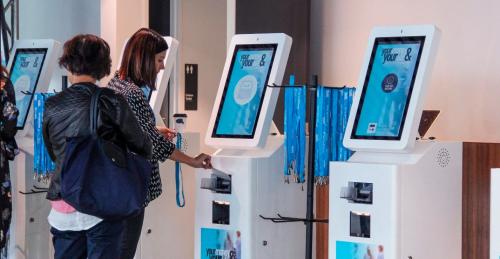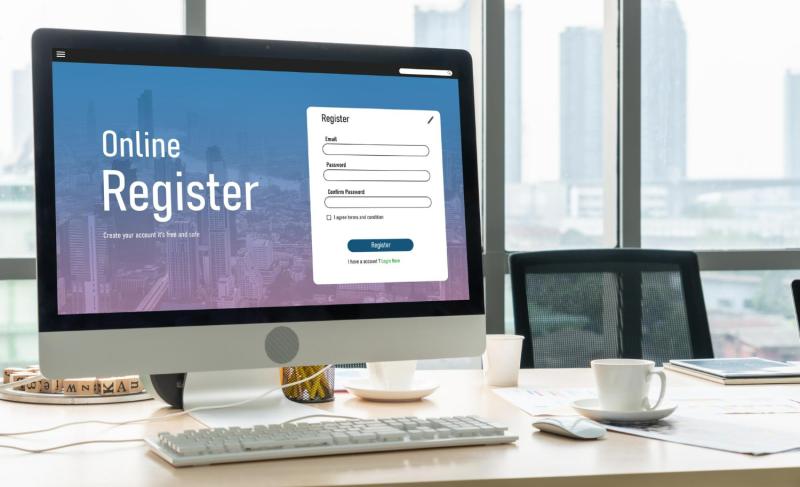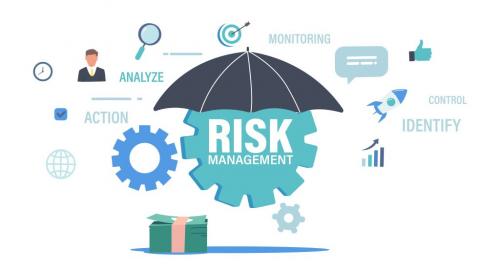Self Event Check-In Kiosks: How to Implement and Benefits

Efficiency is critical in the fast-paced world of event organizing. Whether they are planning a small seminar, a large conference, or a lively trade fair, organizers are always looking for ways to improve the attendance experience and expedite procedures. Self-event check-in kiosks are one creative option that is becoming popular in the sector. Both attendees and event personnel will save time by using these automated kiosks, which provide a quick and easy way for people to register and check in. We'll go into more detail on how to use self-event check-in kiosks and examine the many advantages they provide in this blog post.
Implementing Self-Event Check-In Kiosks
Implementing self-event check-in kiosks involves a meticulous approach and careful consideration of various factors. Let's break down the process further to provide a comprehensive guide:
1. Assess Your Event Needs:
Start by carefully evaluating what is needed for your event. Take into account elements like the event's size and scope, the expected number of guests, and the foot traffic flow. This data will be useful in figuring out how many kiosks are the right amount and where to put them strategically across the space.
2. Choose the Right Software:
The success of your self-event check-in kiosks depends on your choice of check-in system. Seek for a solution that provides strong capabilities like badge printing, barcode scanning, and configurable registration forms, along with easy-to-use functionality and smooth connection with your mobile event app or event management system. Solutions that offer real-time data insights and analytics should also be taken into consideration if you want to manage attendance metrics and keep an eye on check-in activities.
3. Customize Kiosk Interface:
Creating a recognizable and user-friendly interface for your kiosks is crucial to guaranteeing a smooth customer experience. To create a unified and eye-catching appearance, include your event's logo, colors, and branding components into the kiosk interface. When designing menus and directions to walk participants through the check-in process, keep things straightforward.
4. Provide Clear Instructions:
Clear and concise instructions are key to facilitating smooth check-in experiences for attendees. Display step-by-step instructions and prompts on the kiosk screens, guiding users through each stage of the check-in process. Additionally, consider offering assistance options such as on-screen chat support or dedicated staff members stationed nearby to help users who may encounter difficulties or have questions.
5. Test and Train:
Prior to the event, it's crucial to conduct thorough testing of the kiosks and software to identify any potential issues or glitches. Test various scenarios, such as different types of event registrations and badge printing options, to ensure the kiosks perform reliably under different conditions. Additionally, provide comprehensive training for event staff who will be responsible for overseeing the kiosks and assisting attendees. Ensure staff are familiar with the check-in process, troubleshooting procedures, and how to address common issues that may arise.
6. Monitor Performance:
Throughout the event, actively monitor the performance of the self-event check-in kiosks and gather feedback from attendees. Keep track of metrics such as check-in times, usage rates, and user satisfaction ratings to gauge the effectiveness of the kiosks. Use this data to make informed decisions and adjustments in real time, optimizing the check-in process to ensure a seamless and efficient experience for attendees.
5 Top Benefits of Self-Event Check-In Kiosks
Now that we've explored the implementation process in detail, let's delve into the myriad benefits that self-event check-in kiosks offer:
1. Time Savings:
The time-saving features offered by onsite event registration kiosk are among its most important advantages. These self-service kiosks minimize wait times for participants by streamlining the check-in procedure and doing away with lengthy lines. In order to make the most of their time spent networking, attending workshops, and interacting with exhibitors, guests may easily register and check in.
2. Efficiency:
Self-service check-in kiosks simplify administrative duties for coordinators of events, giving up staff time to concentrate on other facets of event planning. Staff members may more efficiently manage their time and efforts when there are fewer manual check-in procedures to supervise, which guarantees the event runs well.
3. Improved Data Accuracy:
Errors and inaccuracies are common in traditional paper-based registration procedures, which can result in problems including duplicate entries, missing information, and incorrect data entry. Smart event kiosk solutions automate data collecting and digitize the registration process to reduce these hazards. Kiosks guarantee correct and current attendance information, which is crucial for post-event analysis, reporting, and future marketing initiatives. They accomplish this by scanning badges of attendees or immediately entering registration details into the system.
4. Enhanced Attendee Experience:
Self-event check-in kiosks provide attendees with the smooth and hassle-free experiences they expect from events. These kiosks enhance attendees' experiences from the minute they arrive at the site by providing a simple and quick check-in procedure. Self-service technology is appreciated by attendees for its efficiency and ease, which enhances the event's overall impression and promotes future participation.
5. Cost Savings:
Self-event check-in kiosks can require an initial expenditure, but there can be significant long-term cost reductions. Through the elimination of manual check-in procedures and the simplification of administrative duties, these kiosks assist event organizers in lowering staffing needs and operating expenses. Self-event check-in kiosks also give organizers the data insights and analytics they need to make data-driven choices, allocate resources optimally, and maximize return on investment for subsequent events.
To sum up, onsite event registration kiosks are a useful tool for event planners who want to improve guest satisfaction and expedite the registration process. Through methodical adoption and utilization of the manifold advantages they present, event planners may propel their events to unprecedented levels of effectiveness, sophistication, and patron contentment. The future of event registration is here, and it's easier, faster, and more fun than ever with self-event check-in kiosks.









Comments